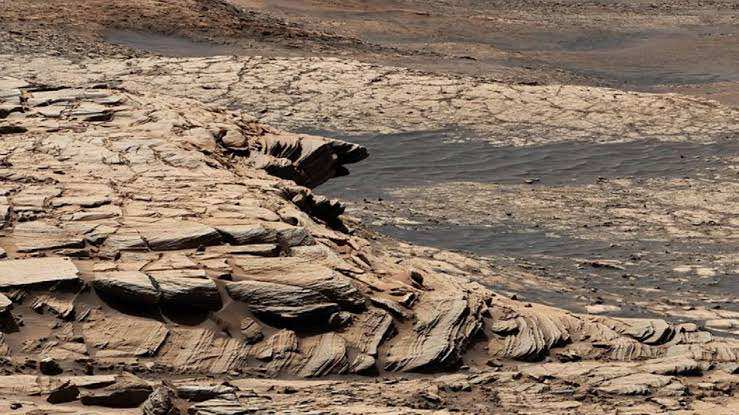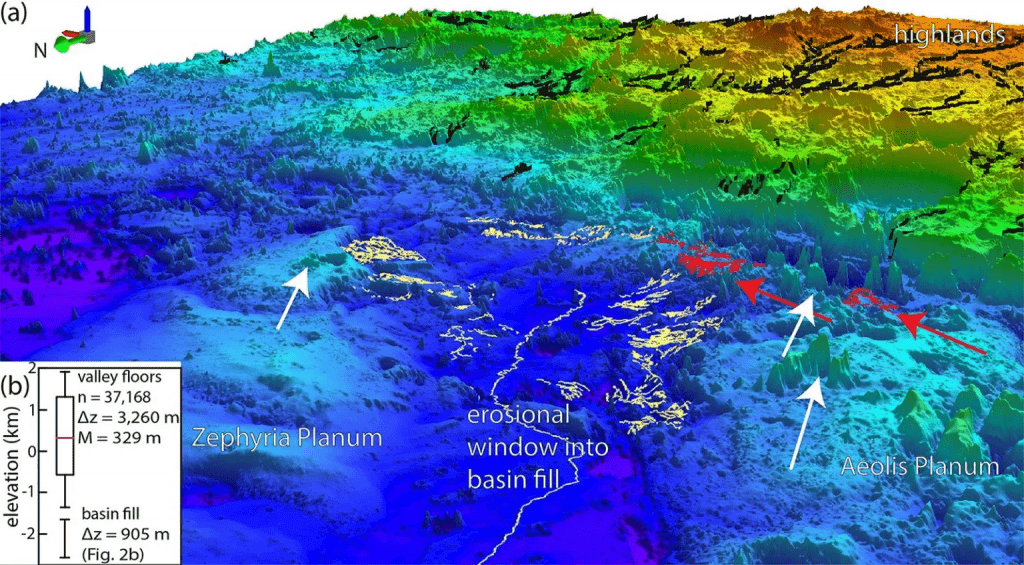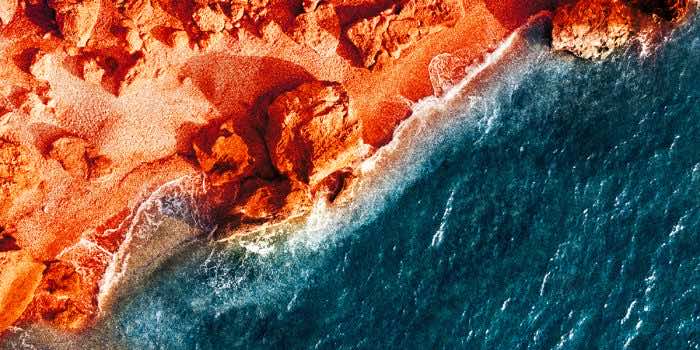A study found new evidence for an old northern ocean on Mars in a set of topography maps. These maps demonstrate that the world once experienced sea-level rise consistent with a prolonged period of warm and rainy weather, which was very different from the harsh, frozen terrain that exists today.
“What Immediately Comes to Mind as One of the Most Significant Points Here Is That the Existence of An Ocean Of This Size Means A Higher Potential For Life,” said Benjamin Cardenas, assistant professor of geosciences at Penn State and the study’s lead author.

“It also reveals information on the development of the ancient climate. These results indicate that there must have been a time when the temperature was high enough, and the atmosphere was dense enough to support this much liquid water at once.”

Using topographical data, the research team demonstrated clear evidence of a 3.5 billion-year-old shoreline with an extensive sedimentary deposit, at least 900 meters thick, covering hundreds of thousands of square kilometers.
Using software developed by the US Geological Survey, the team mapped data from NASA and the Mars Orbiter Laser Altimeter. They discovered 6,500 kilometers of river ridges and grouped them into 20 systems to show that the ridges are most likely the ruins of an ancient Martian coastline.
Using rock formation elements such as ridge-system thicknesses, elevations, locations, and possible sedimentary flow orientations, the team could understand the evolution of the area’s paleogeography.
Cardenas observed that the region, once an ocean, is today known as Aeolis Dorsa and has the highest density of fluvial ridges worldwide.

“The rocks in Aeolis Dorsa capture some fascinating information about what the ocean was like,” he said. “It was dynamic. The sea level rose significantly. Rocks were being deposited along its basins at a fast rate. There was a lot of change happening here,” he added.
Cardenas emphasized that the older sedimentary basins have stratigraphic evidence of the Earth’s shifting climate and life.
If researchers wish to find evidence of life on Mars, they should start with an ocean the size of the one that last covered Aeolis Dorsa.
The study was published in the Journal of Geophysical Research Planets.


